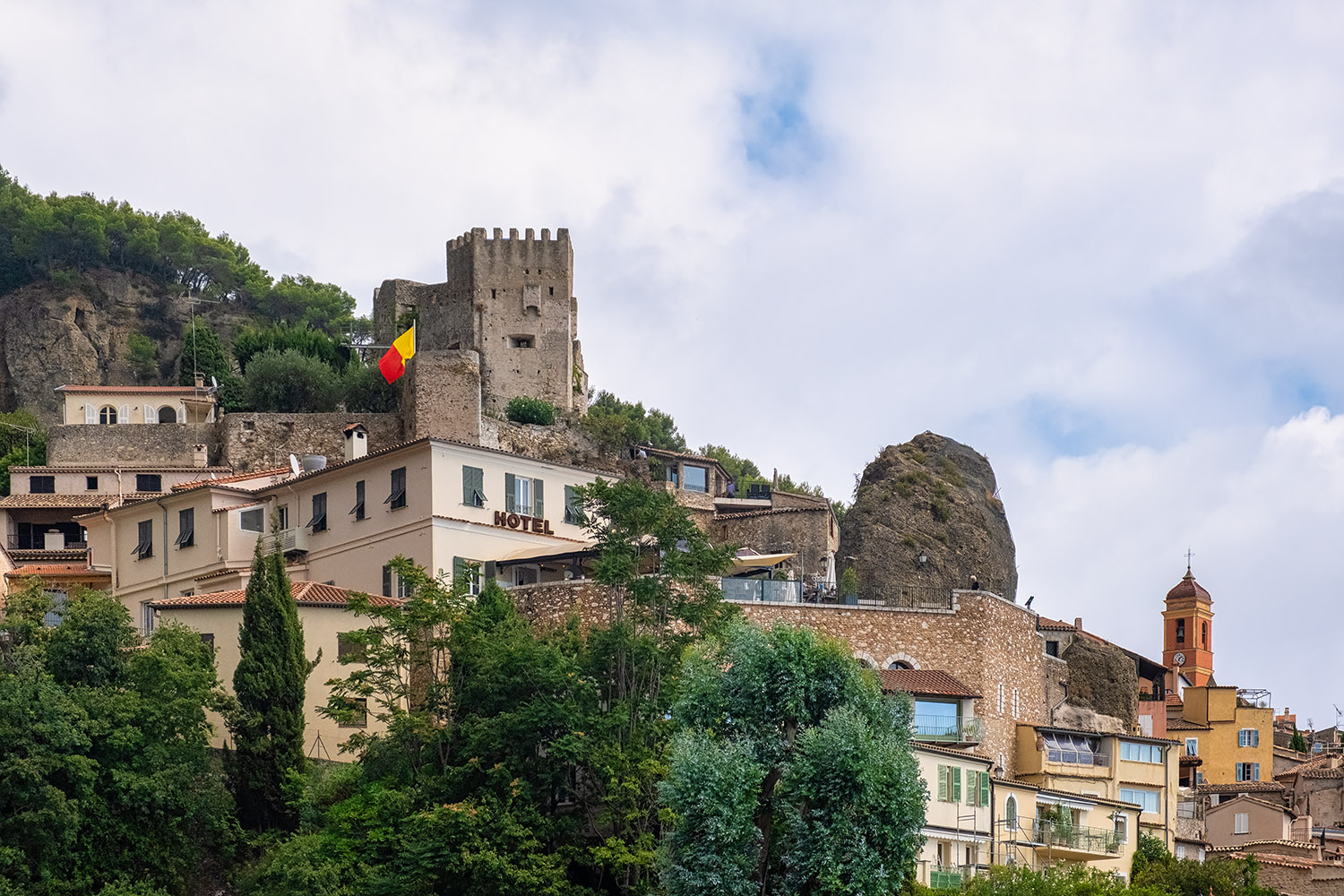
View of the old village of Roquebrune Cap Martin and its 10th Century castle

|
View of the old village of Roquebrune Cap Martin and its 10th Century castle |
Click on any image to see a larger (2400 x 1600 pixel) version!
For a long time now, I wanted to redo one of the oldest pages in this section of our web site, the one on Roquebrune Cap Martin. The problem is that the historic part of the village is not easy to get to by public transportation. From the railway station, seemingly endless numbers of steps lead into the center, and from there, the steps continue all the way to the entrance of the castle from where, you guessed it, there are more steps to reach the top level. As I hope the photos on this page show, the effort is worth it.
The castle of Roquebrune Cap Martin, also called the Grimaldi castle, was built at the end of the 10th Century by Conrad I, Count of Ventimiglia, to prevent the Saracens from re-establishing a foothold in the area. The castle changed hands several times over the years, and from 1395, it belonged to the Grimaldi family for several centuries. The castle was inhabited until 1800.
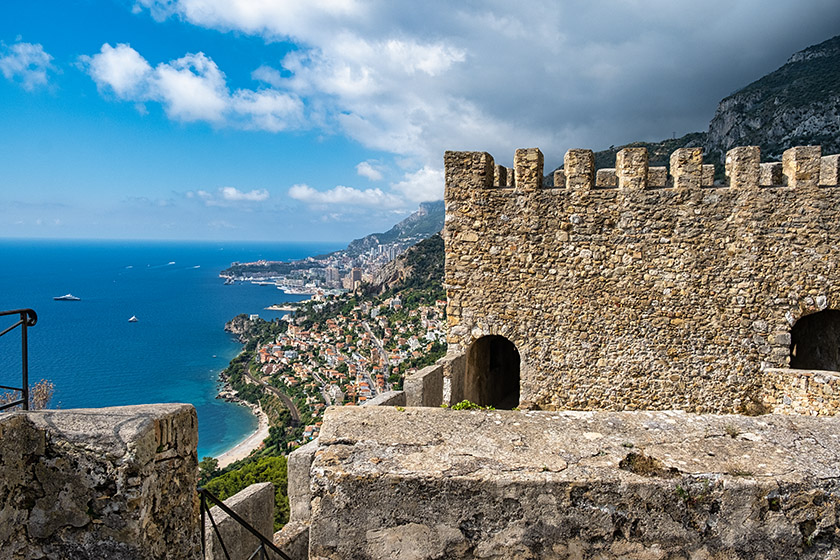
|
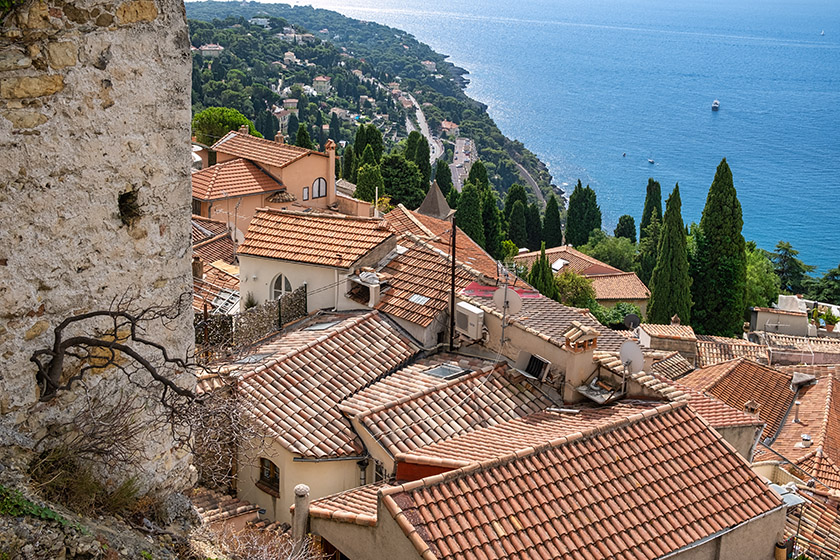
|
Looking from the castle towards Monaco in the southwest |
Roquebrune Cap Martin rooftops |
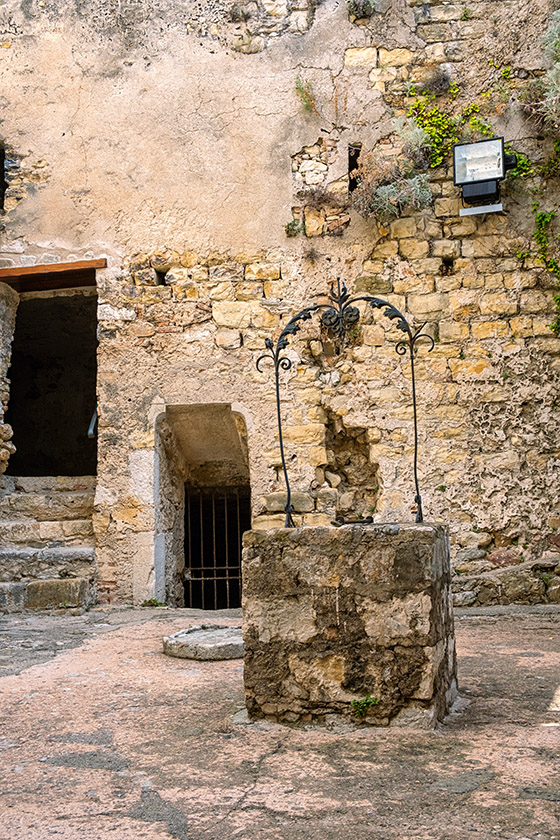
|
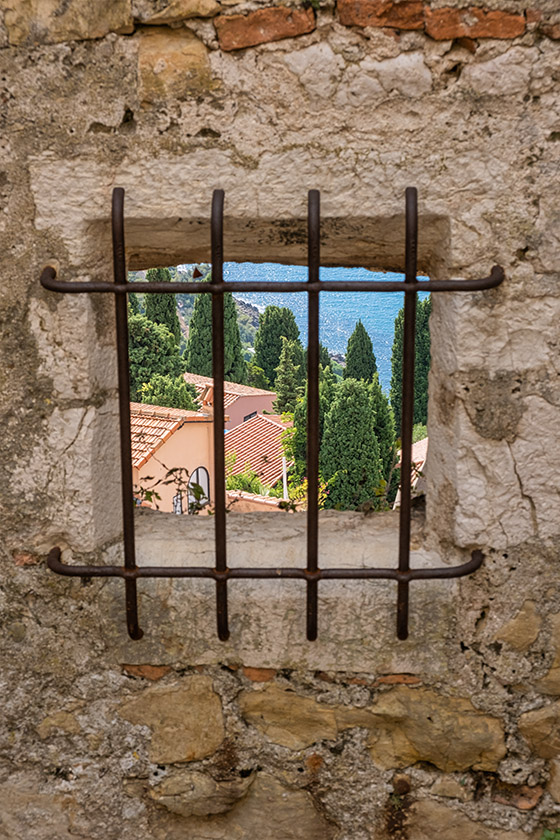
|
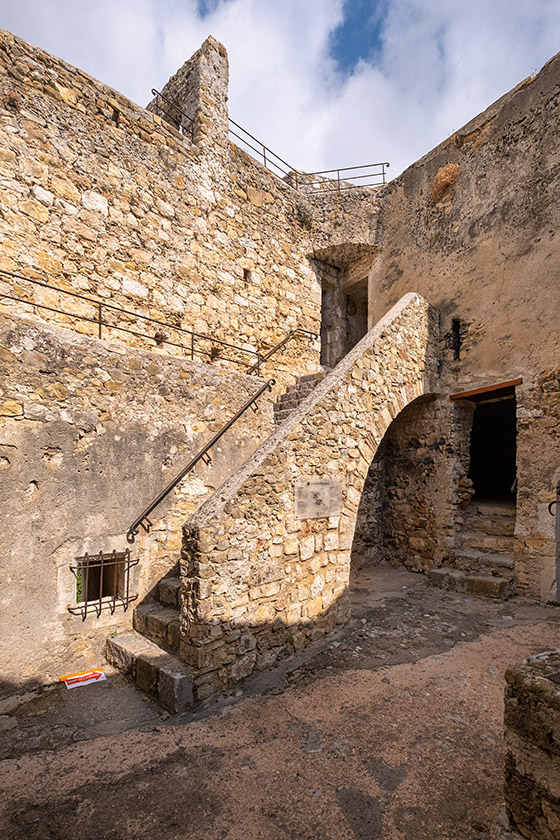
|
The well in the castle courtyard |
Looking down from the courtyard |
The stairs to the upper levels |
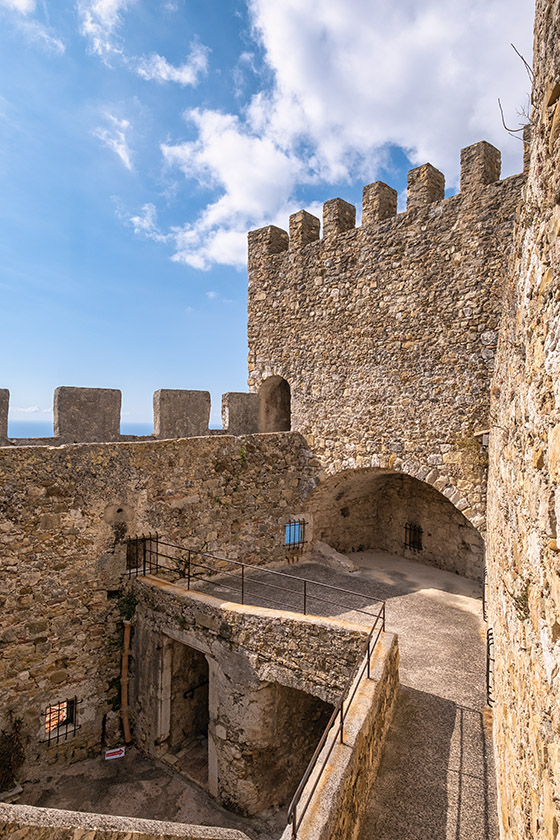
|
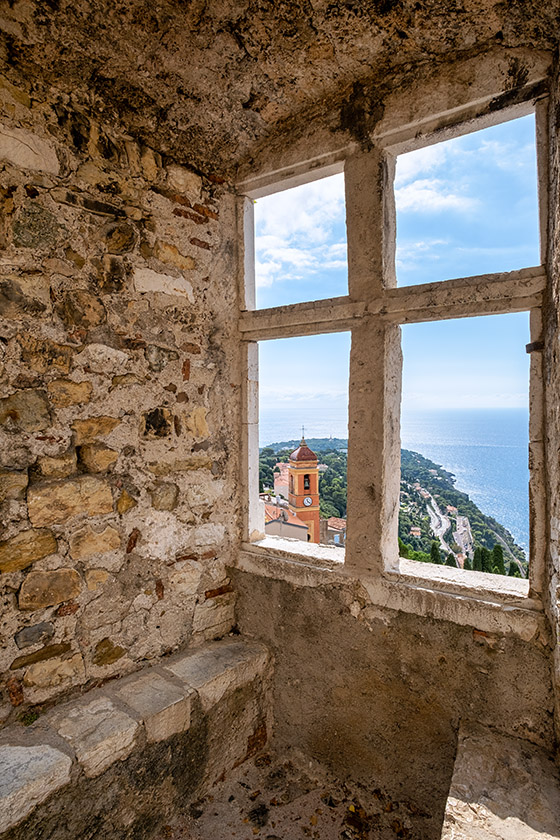
|
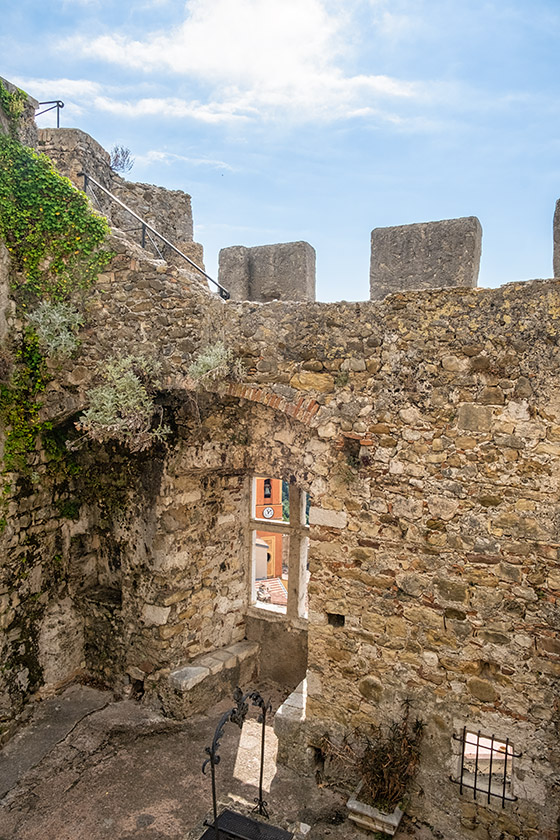
|
Making our way up |
A large window frame |
Looking down into the courtyard |
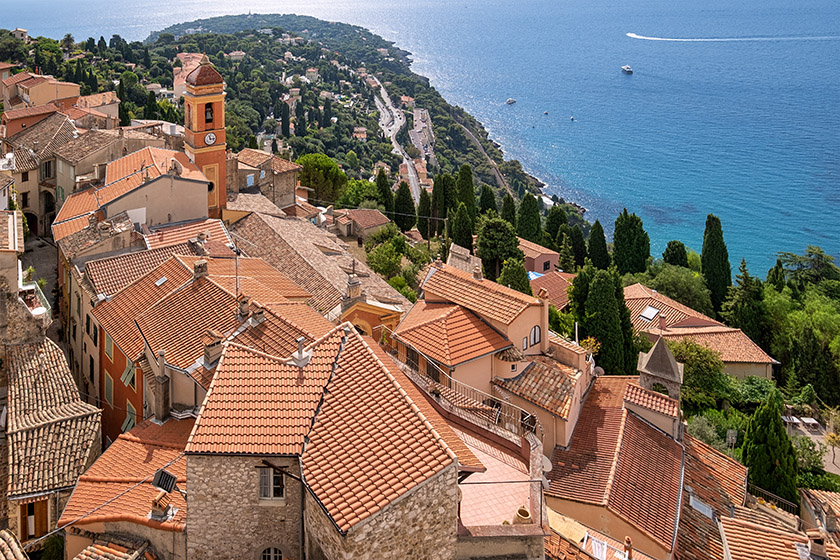
|
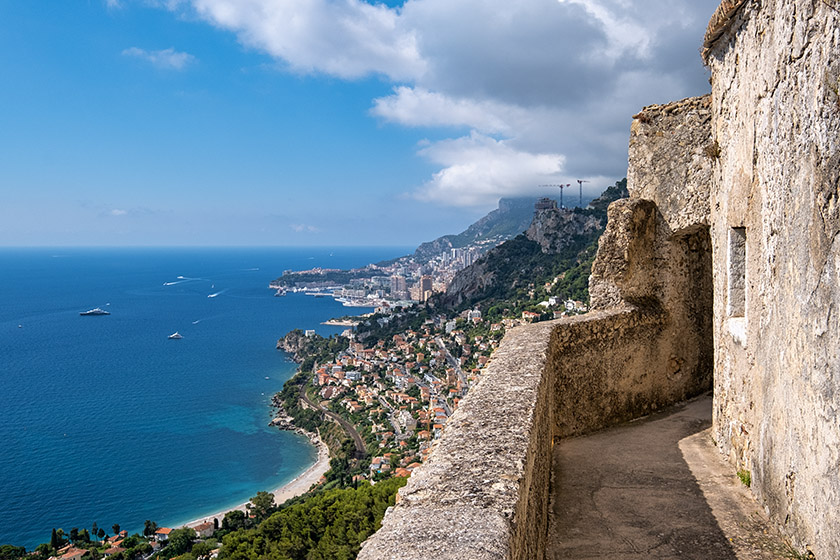
|
The old village overlooks the Mediterranean |
Walking along the castle wall |

|
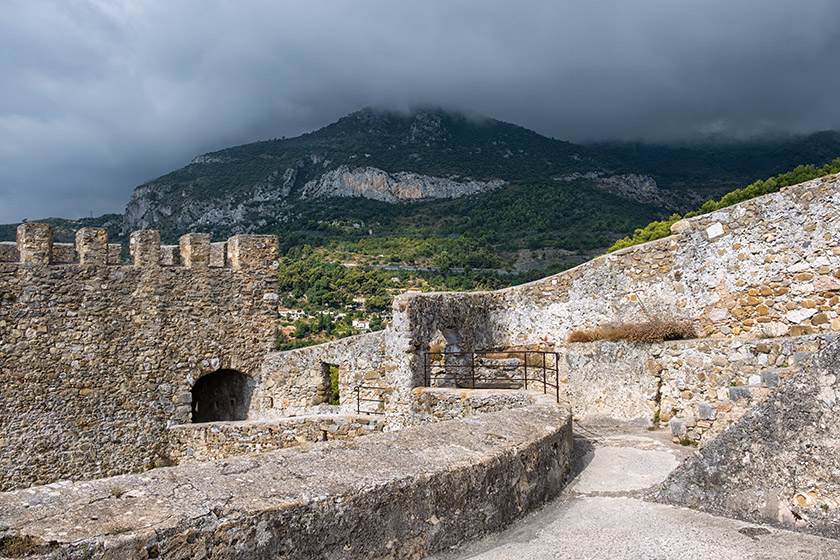
|
Openings in the castle wall afford a look at what lies beyond |
Ominous clouds are building up behind the castle |
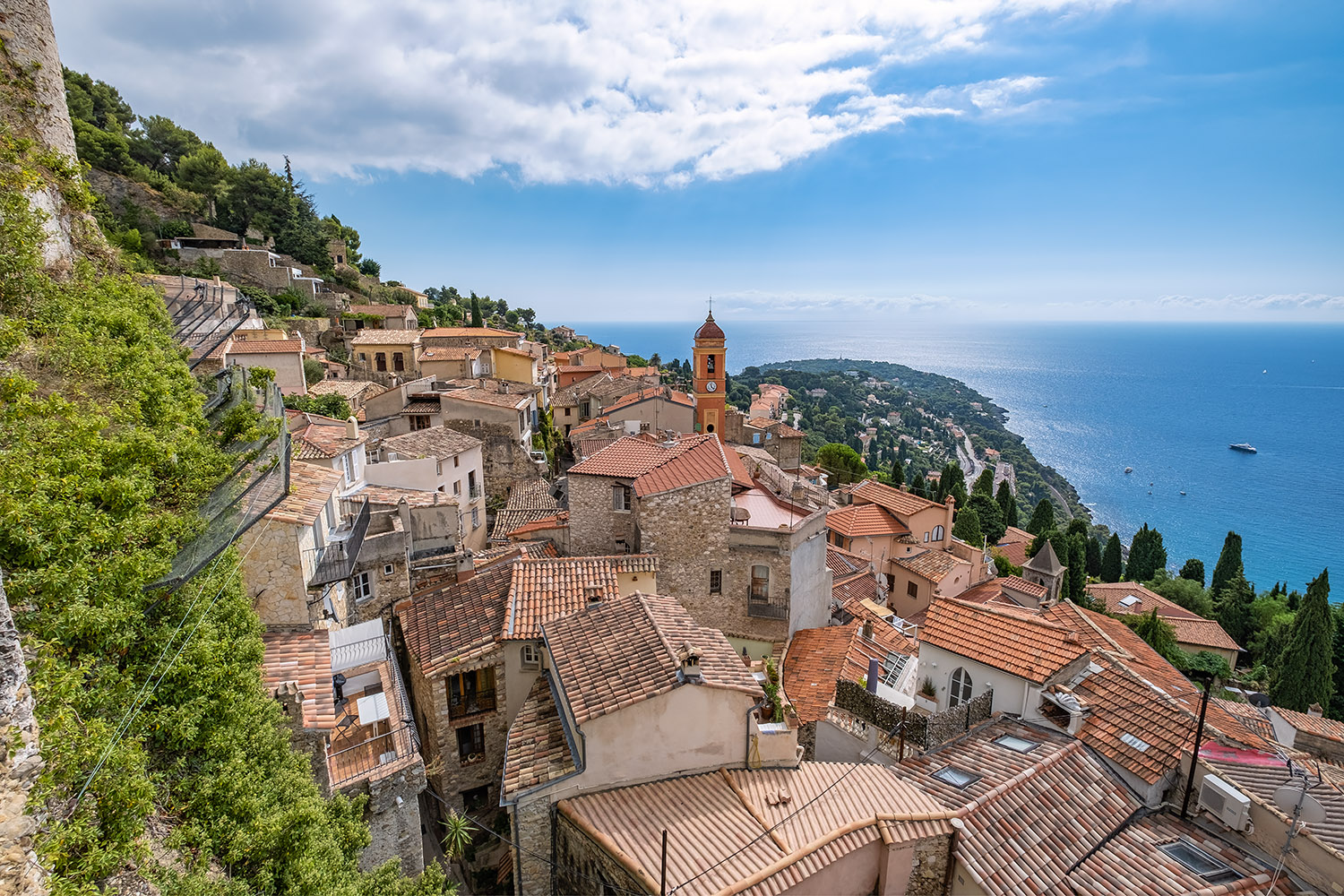
|
The classic village view with the iconic church steeple seen from the castle |
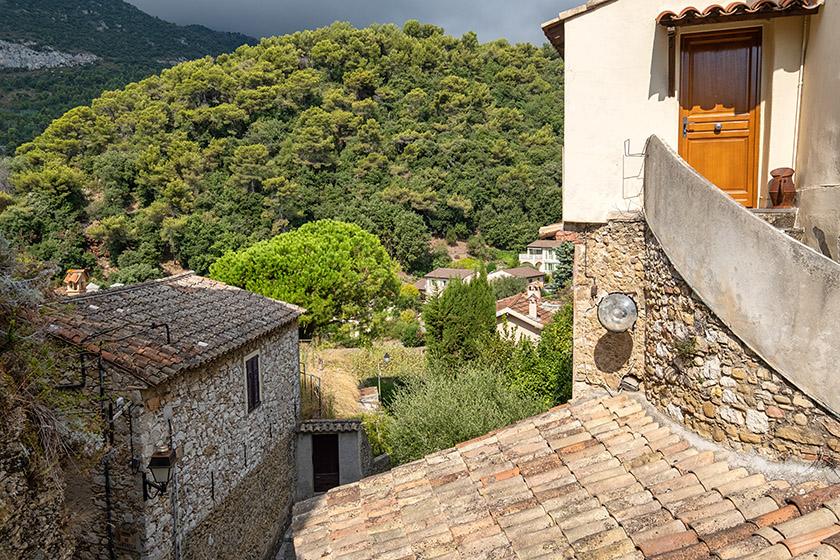
|
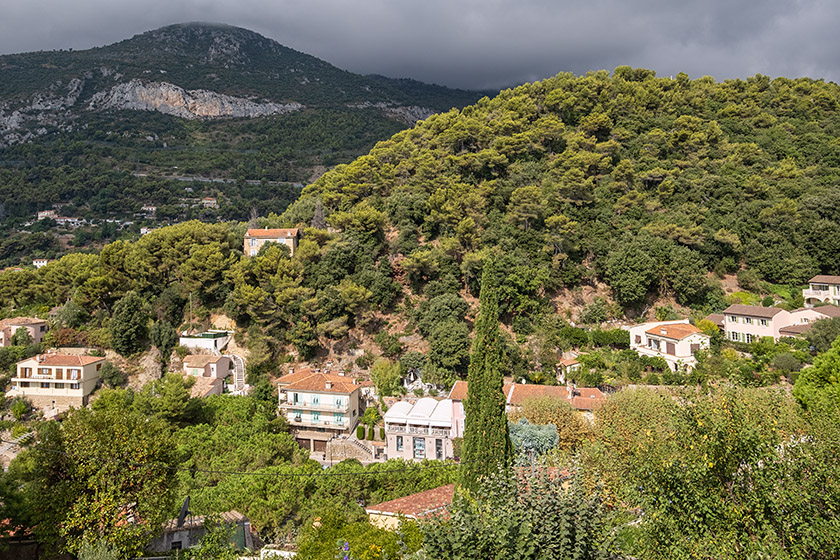
|
Behind the castle |
Somewhere down there is the access road |
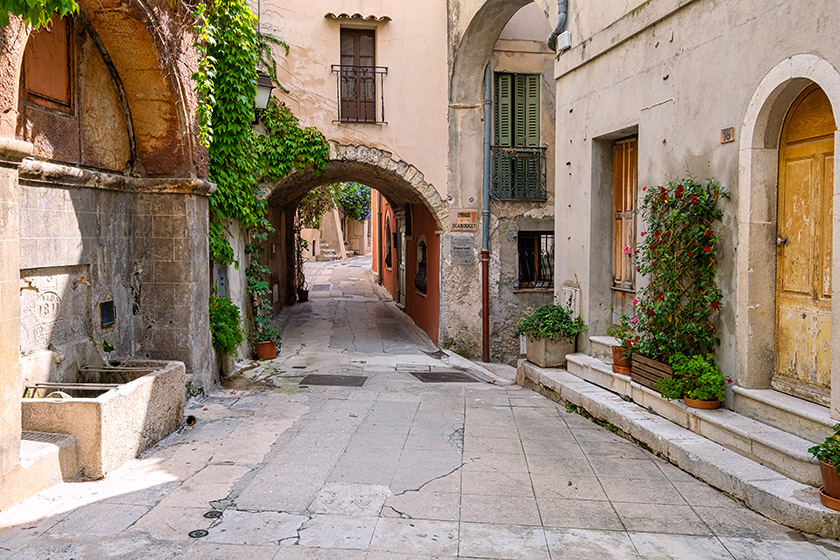
|
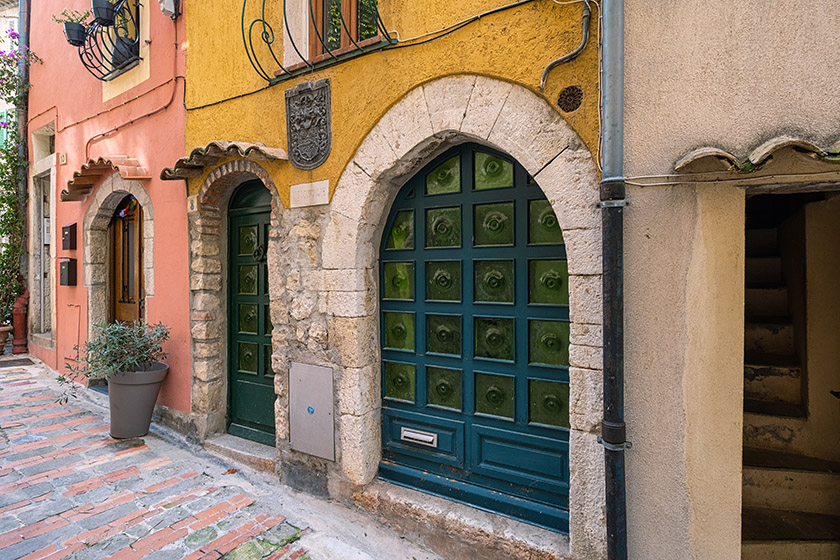
|
The fountain in the rue de la Fontaine |
In the rue de la Fontaine |
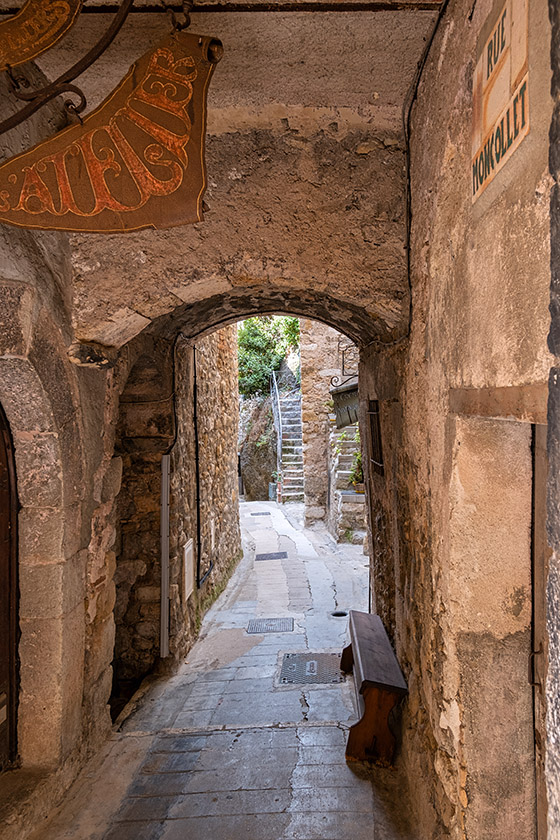
|
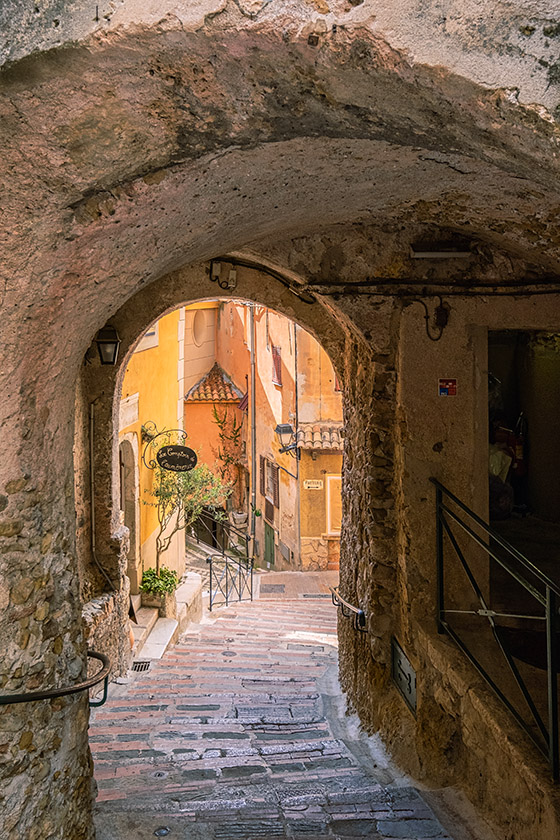
|
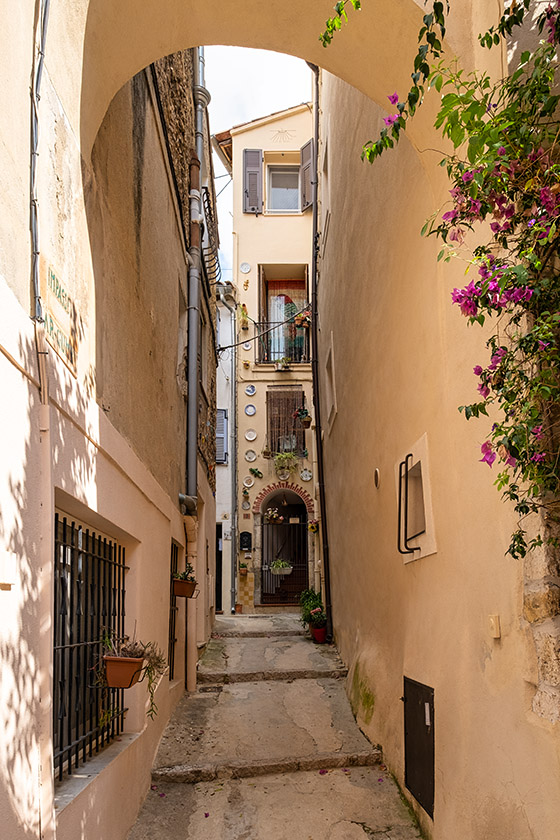
|
The rue Montcollet |
Walking down the rue de l'Église |
Looking up the impasse Ar-Gumb |
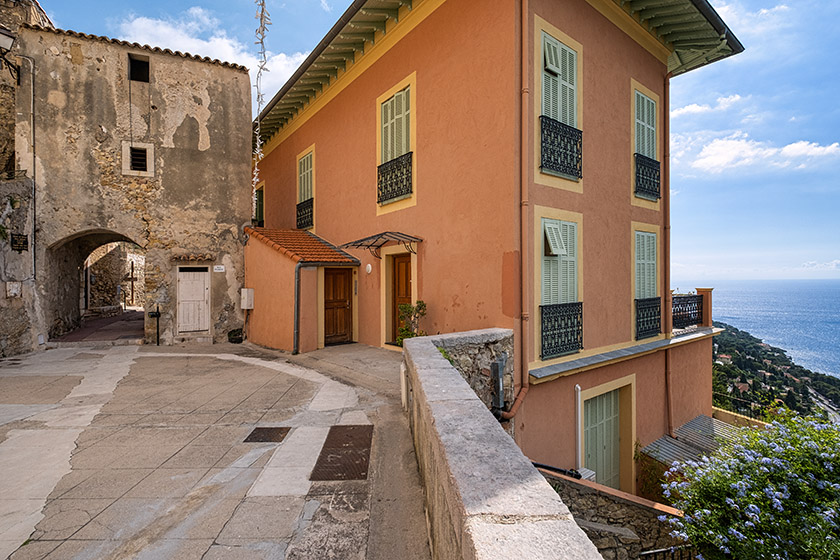
|
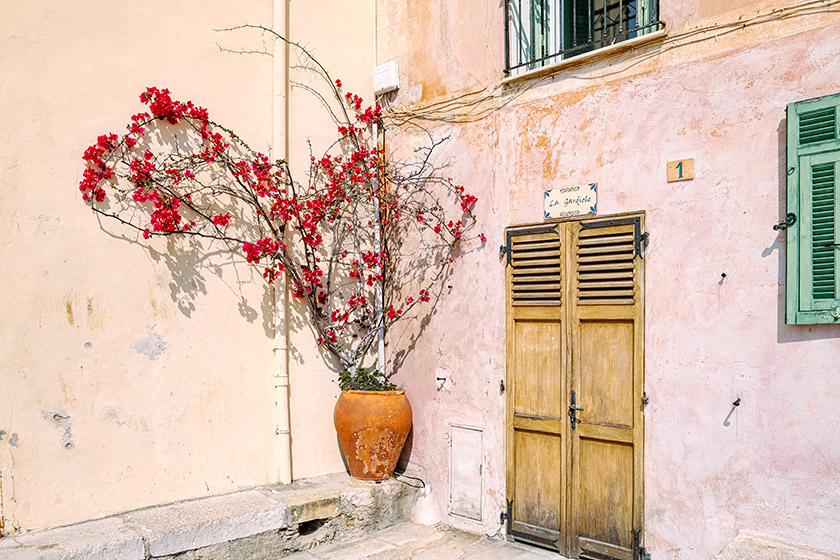
|
The place Capitaine Vincent, a rare level place in the village |
On the place Capitaine Vincent |
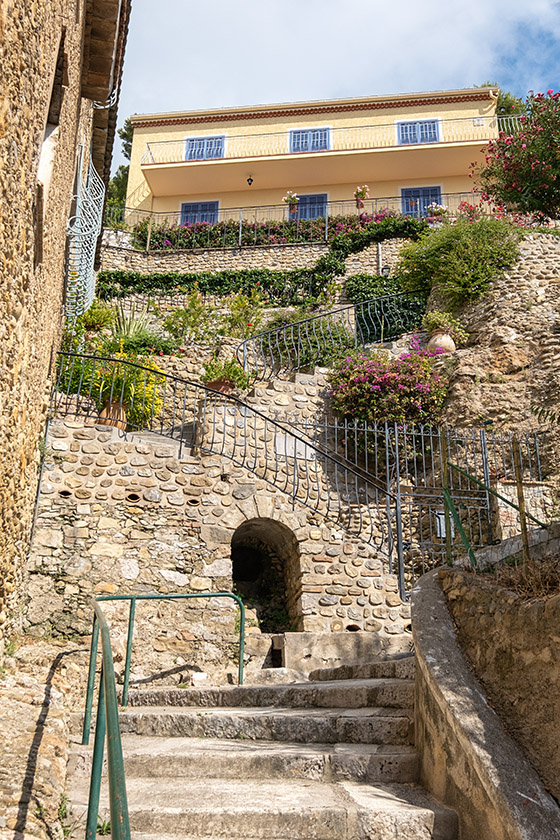
|
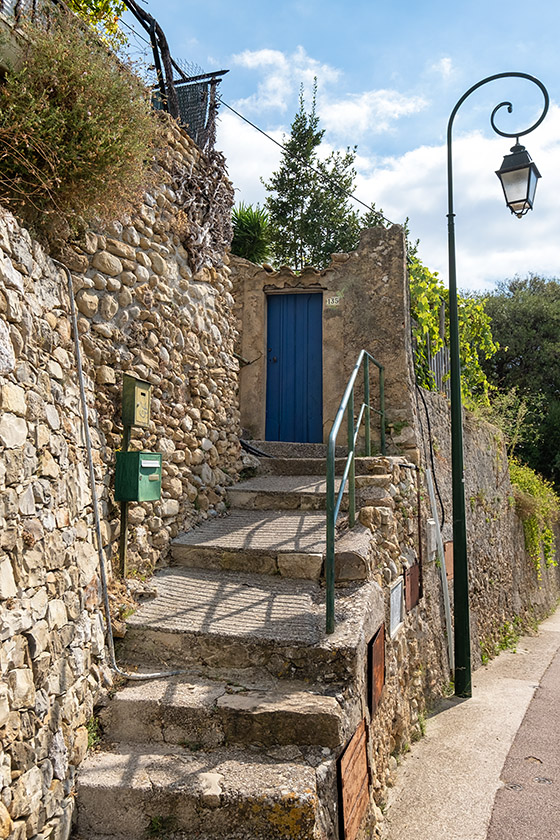
|
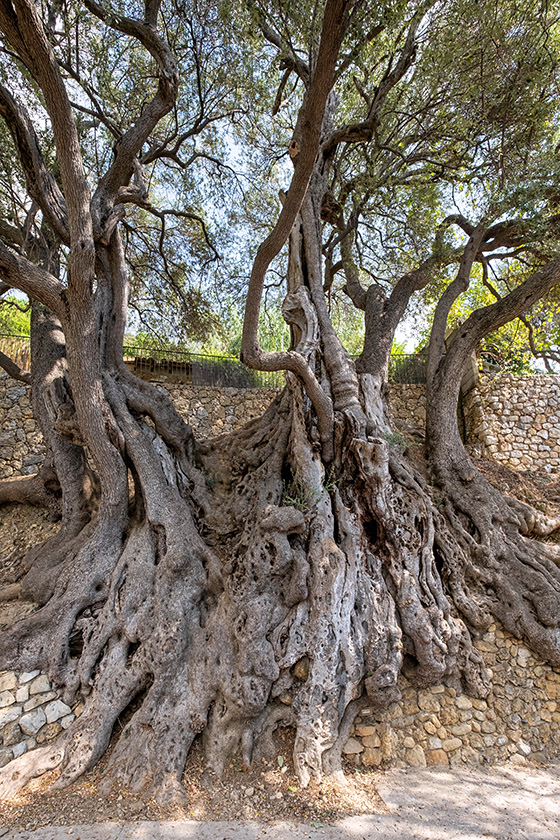
|
Steps going up from the chemin de Menton |
On the chemin de Menton |
The olivier millénaire |
The olivier millénaire is probably the oldest tree in France. It has a circumference of 25.3 meters (83 feet) and it reaches a height of 15 meters (49 feet). Botanist professor Robert Bourdu believes that the tree is over 2,000 years old, while other sources estimate its age between 2,500 and 2,800 years. It is, however, not possible that it is 4,000 years old as some have claimed because that long ago, there were no olive trees in the western Mediterranean yet. Amazingly, the olivier millénaire still produces olives of the Picholine variety.
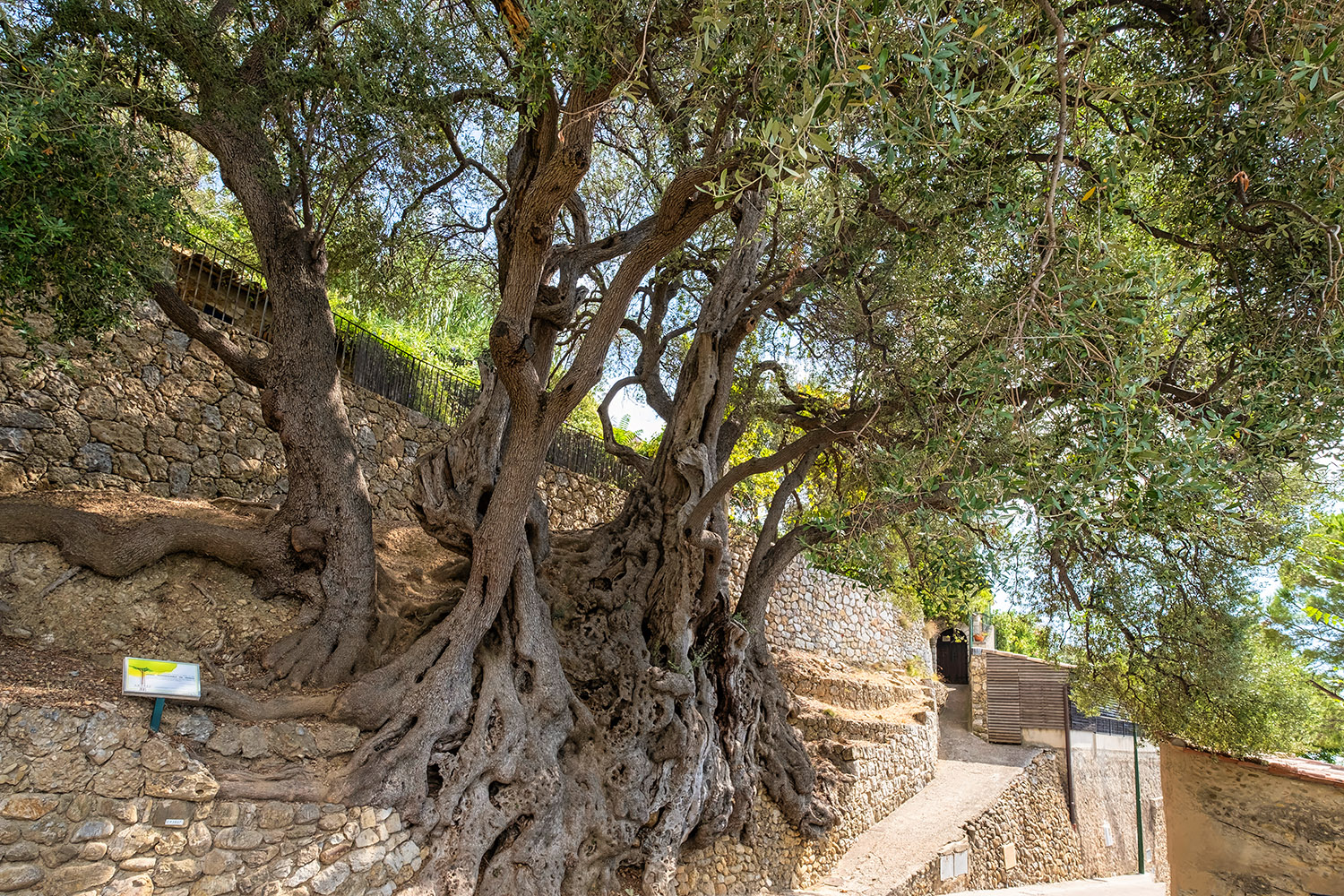
|
The age of this olive tree is estimated anywhere between 2,000 and 2,800 years—and it still produces olives! |
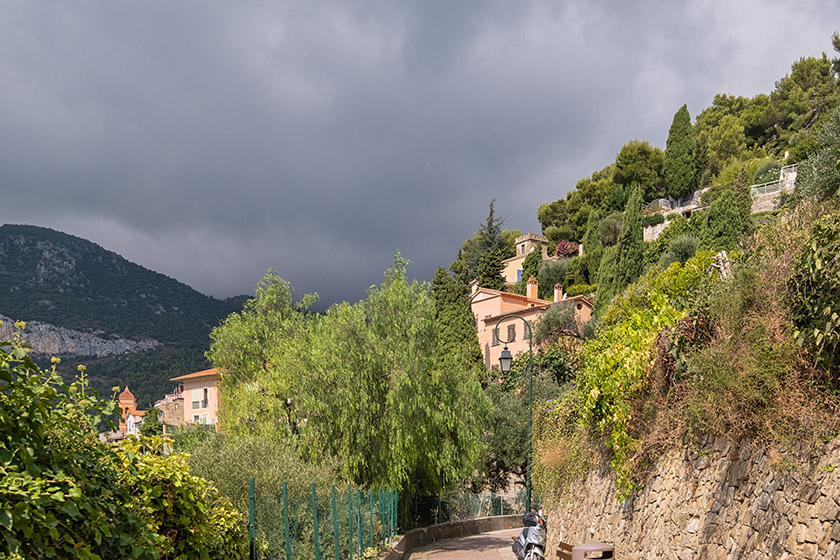
|
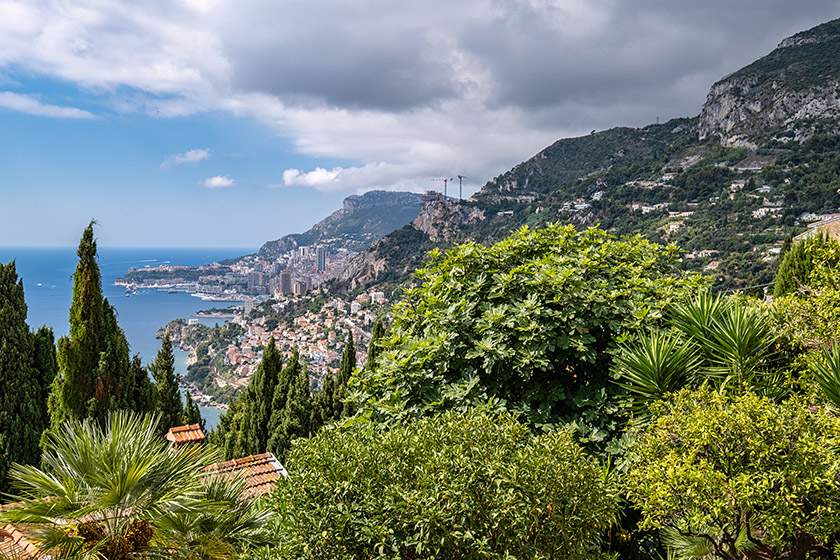
|
Heading back to the village |
Looking towards Monaco |
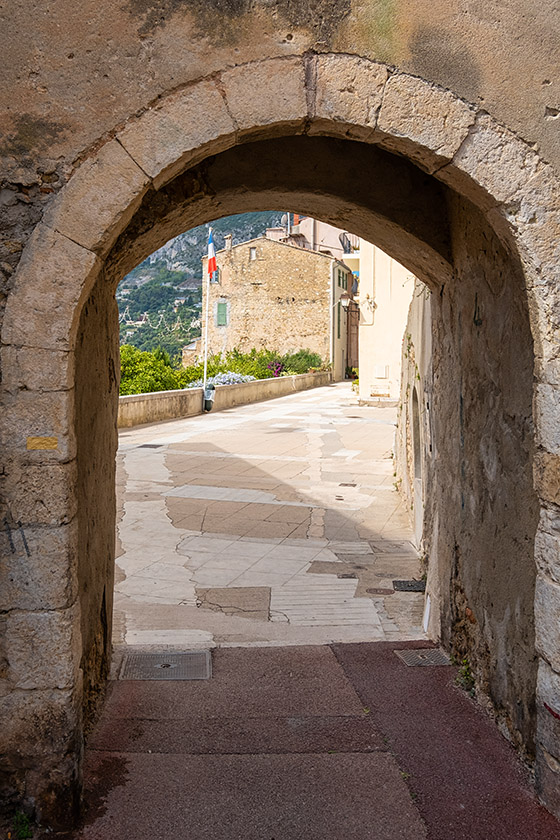
|
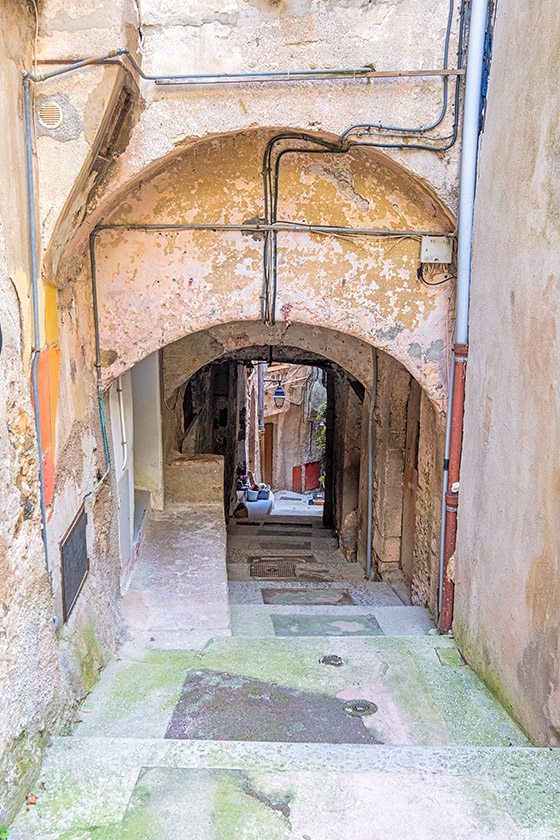
|
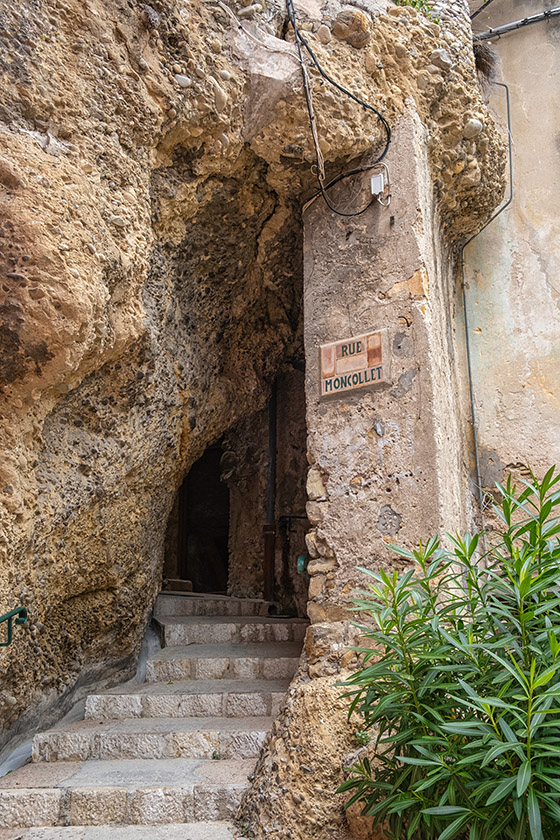
|
Back to the place Capitaine Vincent |
Most streets are long stairways |
Residence on the rue Montcollet |
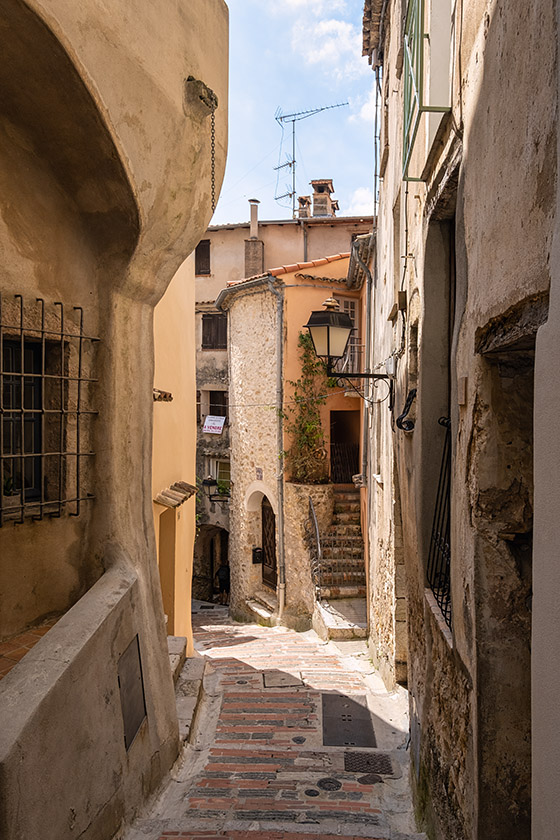
|
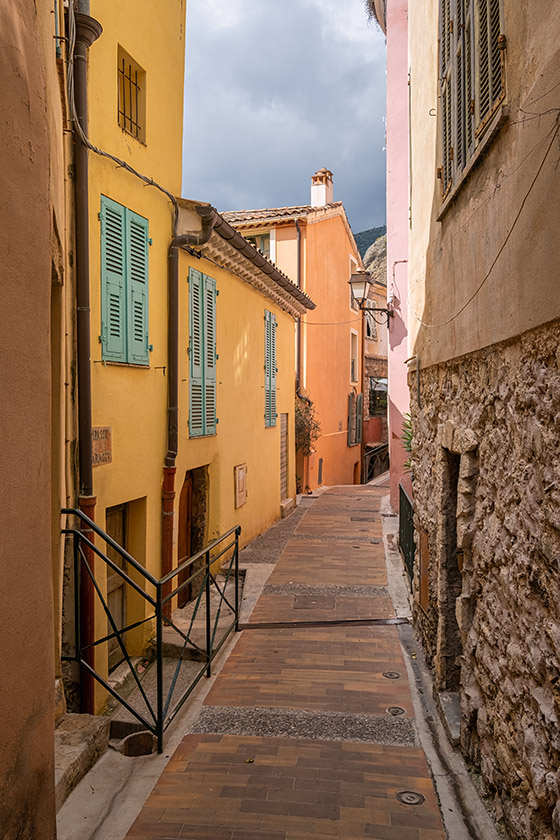
|

|
In the village |
The colors of Roquebrune |
An inviting backyard |
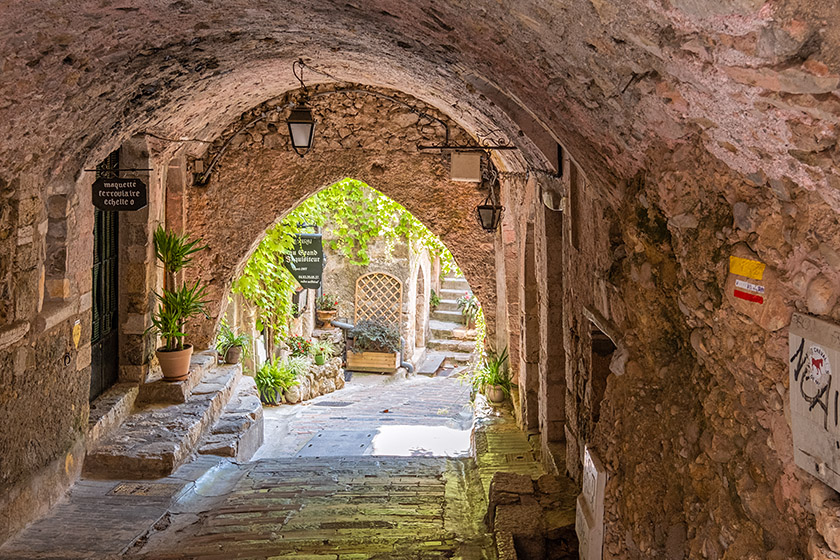
|
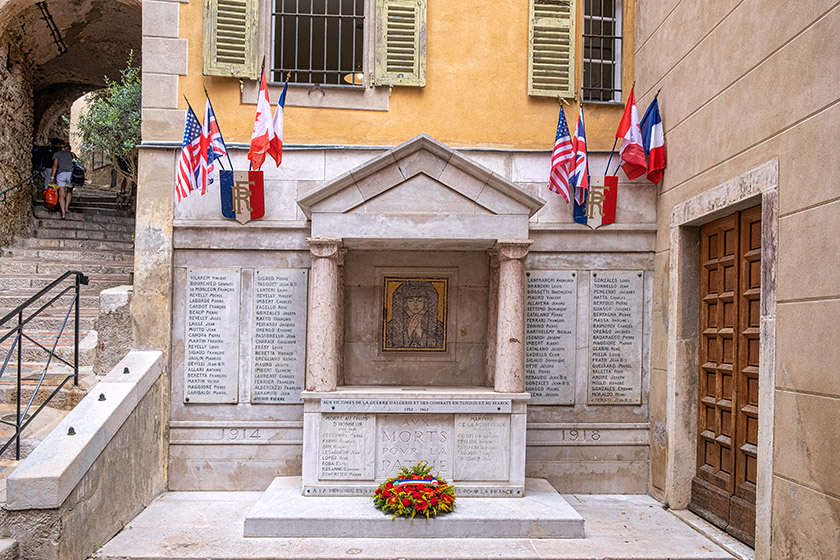
|
Walking down the rue du Château |
The monument to those who fell in two world wars |
The monument shown above is typical in that similar ones can be found in just about any French village. On the two small front panels, just above the wreath, are the names of the eight villagers who fell in World War II and the names of the five local members of the résistance who were killed during the same conflict. On the four large panels on the left and right are the names of the eighty-four villagers (!) who died in the incredible butchery that was World War I. The population of Roquebrune Cap Martin (not just the old village) was approximately 5,500 when the first World War broke out, so this gives an idea of the price paid by each community. On the day we were there, September 6, they were celebrating the anniversary of the village's liberation in 1944 by American, British, and Canadian troops; that is why the flags of these countries are displayed next to the French tricolore.
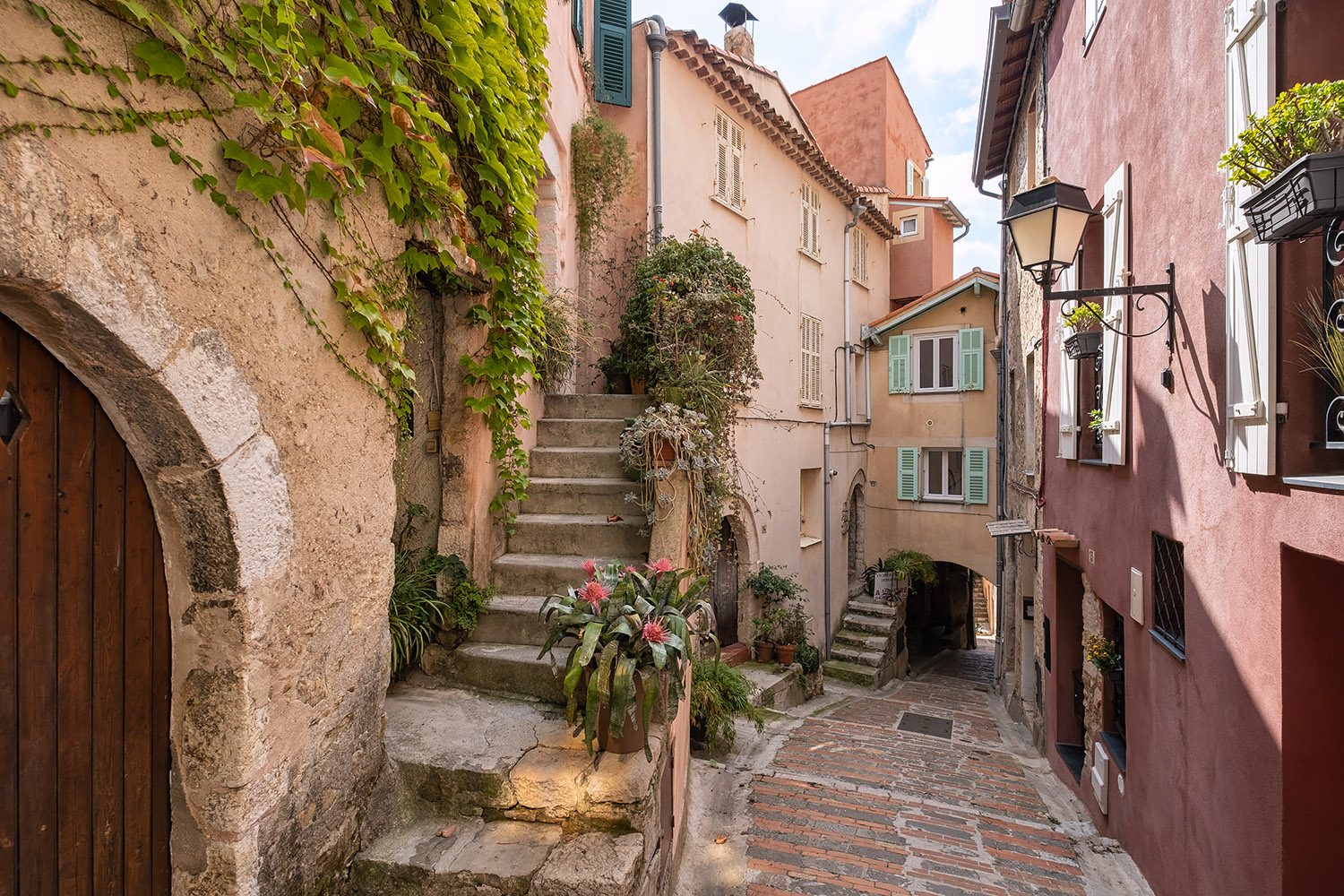
|
A terrible place for a bicycle, but a great one for a camera! |
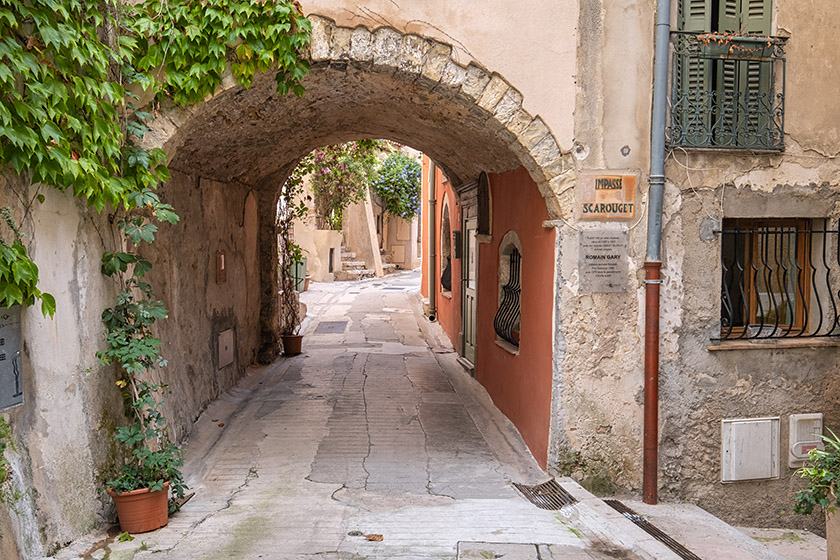
|
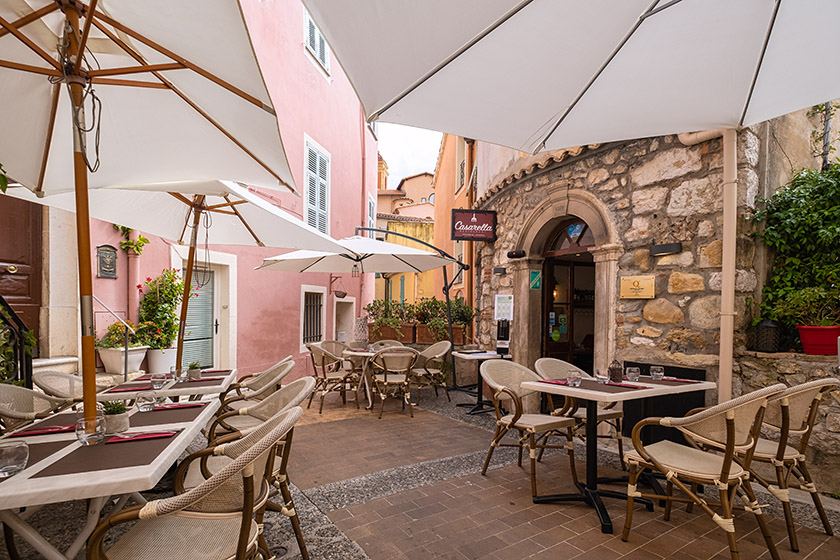
|
One of a few streets without steps |
Noon: we were the first at Casarella where we had lunch |
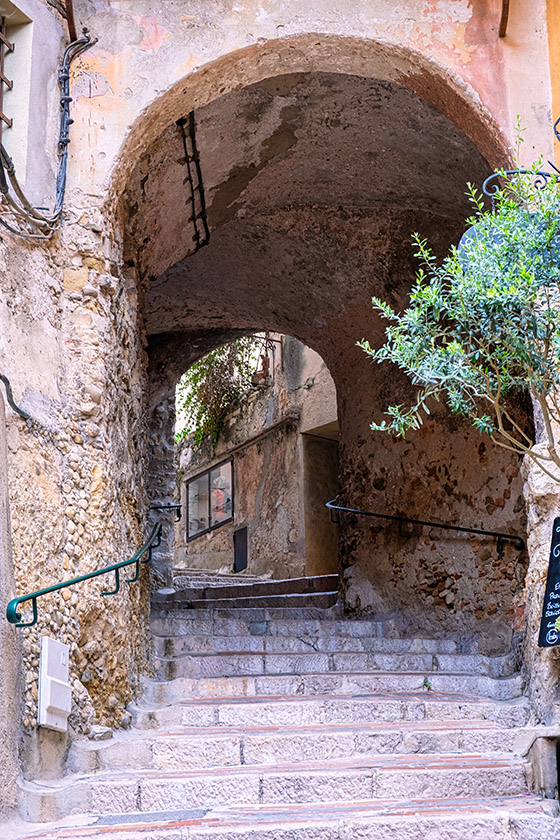
|
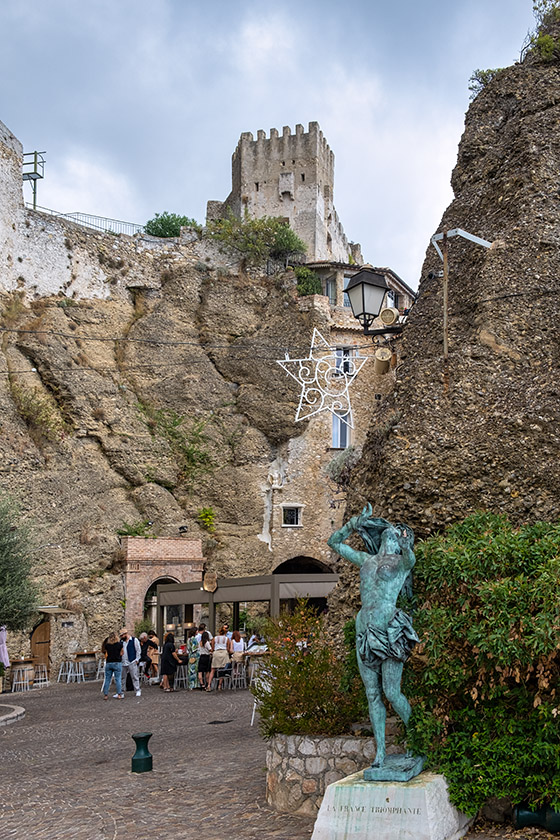
|
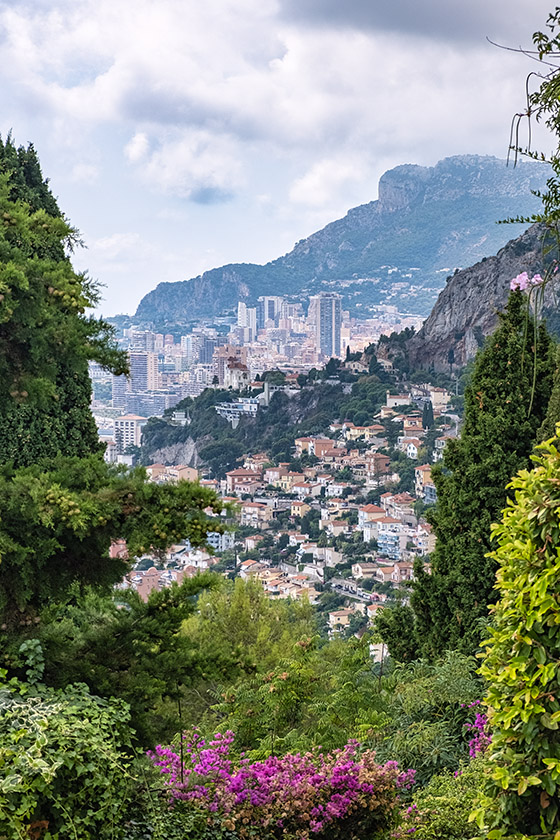
|
The rue du château |
On the place des deux frères |
Looking down towards Monaco |
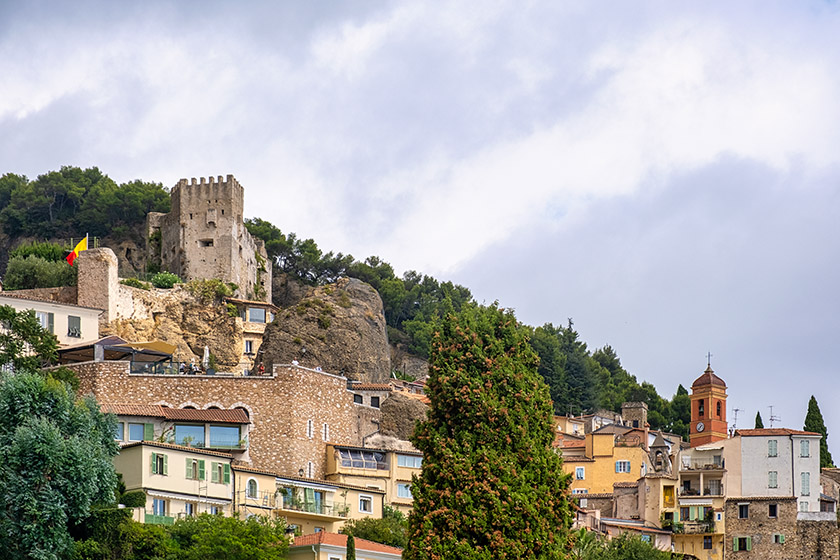
|
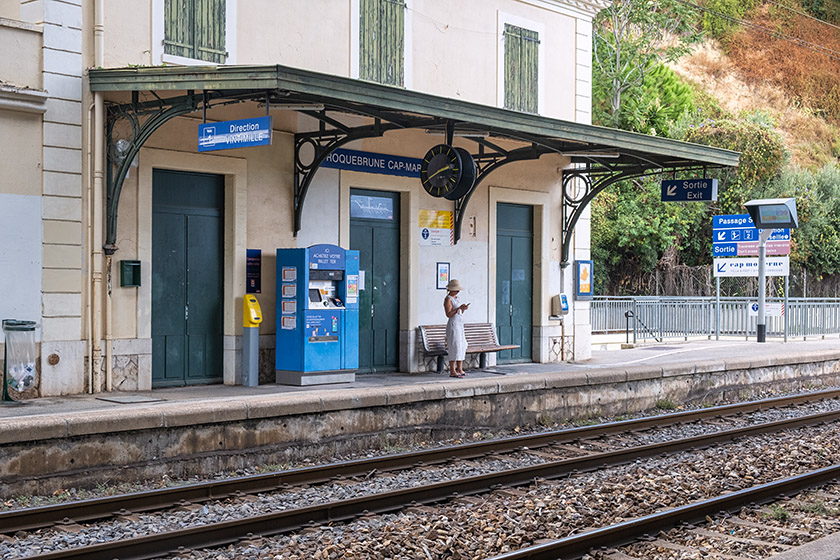
|
On the way down to the railway station, one last look at the castle |
Waiting for the regional train to take us back to Cannes |
A number of famous people are associated with Roquebrune Cap Martin. Irish poet William Butler Yeats died here in 1939; André Malraux lived in the village from January 1941 to the fall of 1942, while Jacques Brel owned a cottage near the beach from 1960 to 1970 and composed some of his most famous chansons there. Swiss-French architect Le Corbusier died of a heart attack after swimming in the Mediterranean in 1965 and is buried in the local cemetery. Many other more or less well-known people, including artists, sports figures, and even a dictator (Mobutu Sese Seko) have lived in the village.
The photos on this page were all taken on September 6, 2020.
They may also bee viewed in a Gallery or as a
Slide Show.
Do you miss our old Roquebrune page? You can still take a look at it here.
Navigation has been removed from the old page; simply close the browser window or tab to get back here.
Home | Site Info | Family | The Area | Trips | France | Work | Rants | Photography | Odds & Ends
This page was last modified on October 1, 2020
Send feedback about this page to feedback@kiechle.com
https://www.kiechle.com/area/roquebrune/index.htm
(optimized for Retina display)
All contents © 1999-2025 The Kiechles